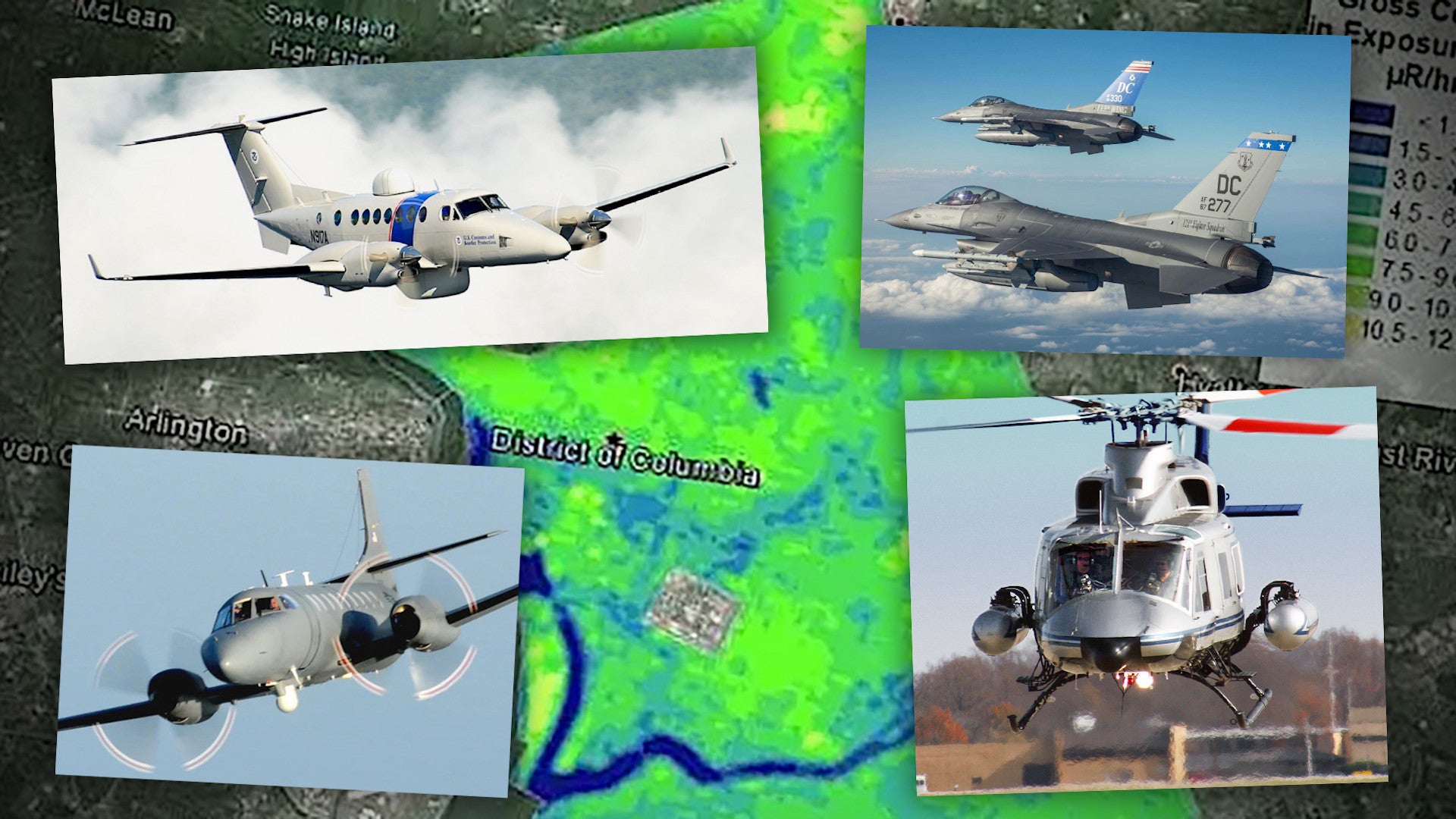With so many uncertainties surrounding the inauguration of President-elect Joe Biden following the deadly storming of the Capitol by pro-Trump demonstrators on January 6, one thing is for certain—it is likely to become the most heavily surveilled major domestic event in American history, especially from the air.
Over the last two decades, as aerial surveillance technology has steadily matured, driven by various conflicts abroad, overhead surveillance has become increasingly commonplace during major high-profile events and pointed law-enforcement actions back in the homeland. From rural areas along the border to major cities, federal and even military aerial assets have been put to use to help accomplish high-stakes missions. This, of course, goes beyond local police helicopters and light fixed-wing aircraft equipped with spotlights and commercial-grade electro-optical and infrared systems. Increasingly often, far more exotic payloads are being carried aloft of the American citizens’ heads, many of which were products of lessons learned during the initial stages of the Global War on Terror.

So, with over 25,000 National Guard troops, thousands more active-duty military personnel, and throngs of law enforcement from an alphabet soup of agencies patrolling the nation’s capital, the powers that be are also bound to apply their newest and most capable aerial assets to the mission. While the airspace around the National Capital Region (NCR), which encompasses the District of Columbia and various adjacent areas, will be almost completely sanitized of commercial and civilian traffic, a stack of surveillance assets the likes of which we may never have seen before will likely be orbiting overhead, sucking up all types of data, and communicating with a bustling command post down below.
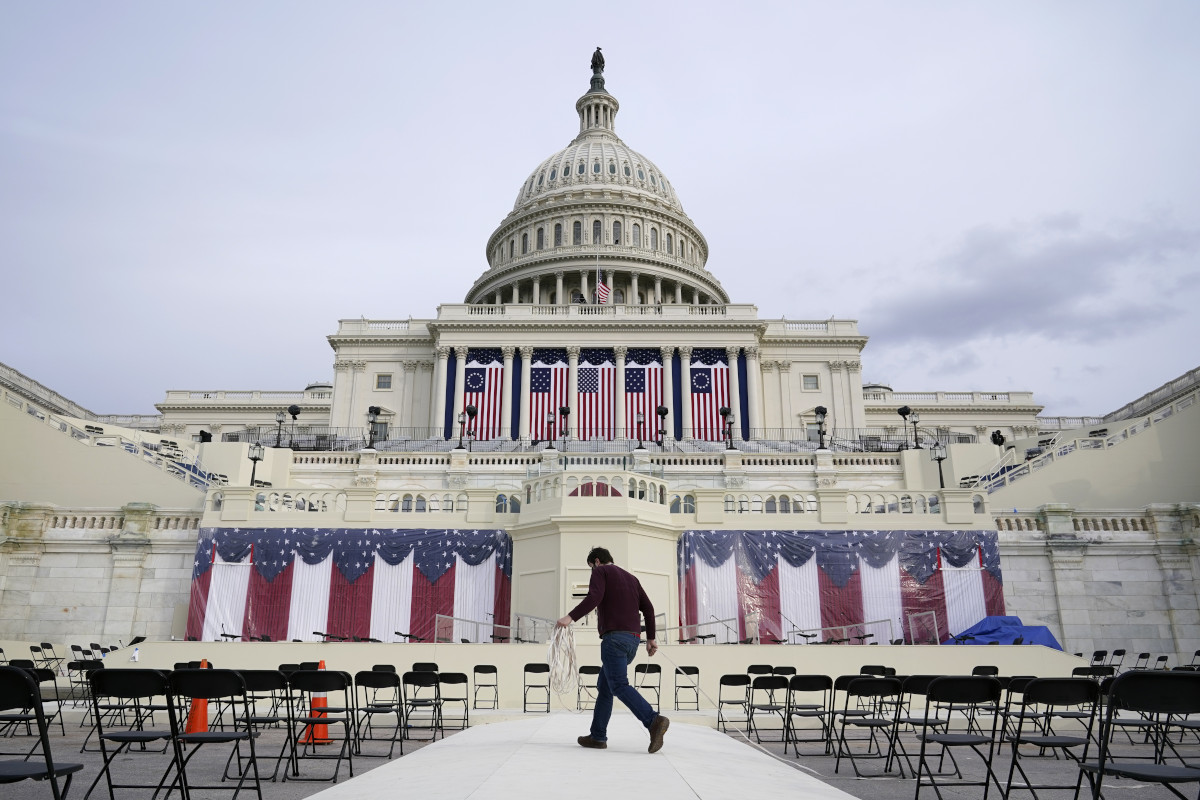
With that said, here is an overview of what types of aircraft with intelligence, surveillance, and reconnaissance (ISR) capabilities will likely be part of this massive and historic security undertaking, from the obscure to the more mundane.
We can start with the active military. Legally, there are significant restrictions on when and how elements of the U.S. military at the federal level can conduct any kind of operations domestically, including providing aerial ISR support to law enforcement agencies, something The War Zone
has covered in detail in the past. There are also limitations in the circumstances under which elements of the U.S. Intelligence Community, including active and reserve components of the U.S. military that fly ISR aircraft, can target U.S. citizens directly, something that presents additional legal hurdles.
ISR aircraft assigned to active-duty units have been used domestically in the past, but most commonly as part of responses to major natural disasters. For instance, U.S. Air Force U-2 Dragon Lady spy planes and RQ-4 Global Hawk drones have been employed to track the spread of wildfires in the past and OC-135B Open Skies surveillance planes collected visual imagery to help assess damage after Hurricanes Katrina and Rita in 2005.
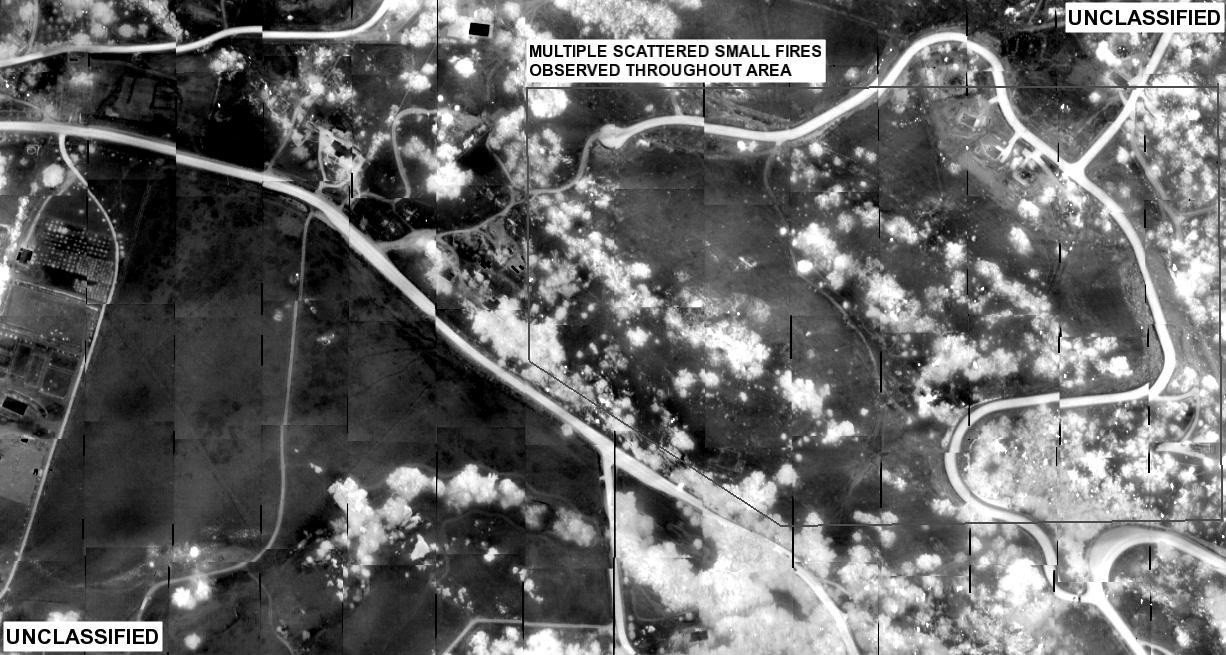
That being said, there are certainly examples of active-duty U.S. military aerial ISR assets supporting the security posture around very high-profile domestic events – which the U.S. government terms National Special Security Events (NSSE) and is a category that the inauguration certainly falls into – as well as helping law enforcement agencies respond to especially significant crimes.
U.S. Army RC-12 Guardrail signals intelligence (SIGINT) aircraft notably flew patrols around the 2002 Winter Olympics in Salt Lake City, Utah. That same year, that service deployed an RC-12Q, a variant that also featured high-bandwidth satellite communications relay capabilities, to work with the Federal Bureau of Investigation (FBI) to track suspects in the Beltway Sniper shootings, which occurred in the greater Washington, D.C. area, by their cell phone signals.
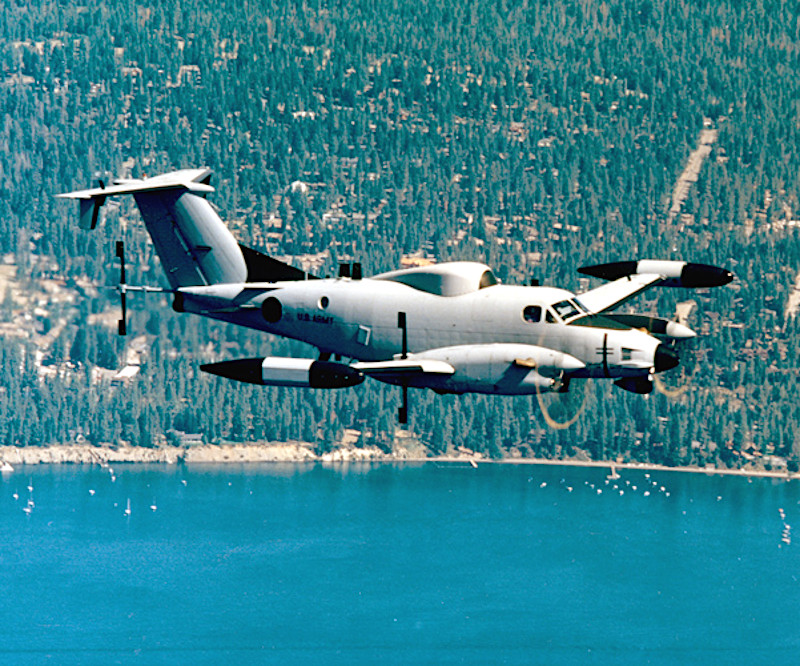
When it comes to the inauguration, smaller turboprop ISR aircraft, such as the Army’s latest MC-12S family or similarly configured Beechcraft King Air aircraft within the U.S. special operations community, could be particularly useful for keeping an eye on things. The U.S. military now often employs contractors, including for certain domestic operations, such as border patrol, which fly other similarly-sized ISR-configured types that wear civilian registrations.

Many of these aircraft are equipped with sensor turrets containing electro-optical and infrared video cameras for keeping tabs on what’s going on down below, as well as SIGINT packages, primarily intended for monitoring communications chatter. Certain SIGINT systems could also potentially be used to spot, geolocate, and categorize other emitters, such as the control systems for small unmanned aerial vehicle, a type of potential threat that has only become more concerning in recent years.
Aircraft carrying wide-area airborne surveillance (WAAS) systems, a groundbreaking technology that was born out of the wars in Afghanistan and Iraq, will also likely be used to collect streaming video of large parts of D.C. at once. This information could then help establish an understanding of the activities, or “patterns of life,” of groups leading up to any major crisis that may occur before, during, or after the inauguration.
In fact, there are few domestic missions as relevant to game-changing WAAS technology as the inauguration. Its nearly panoptic gaze over a huge area can spot groups of protestors or nefarious actors as they gather, as well as large infrared events, like explosions — via automatic recognition and tracking software or manually — and allow commanders on the ground to rapidly respond in kind. The same can be said for other abnormalities that occur throughout a large geographical area within the WAAS’s systems wide purview.
WAAS-equipped aircraft can also help target areas where aircraft with traditional ‘soda straw view’ electro-optical and infrared cameras are needed to take a closer look, but they can do this faster under most instances, as they do not need to reposition themselves to do so, they simply ‘zoom in’ on the data they are already collecting. Even keeping critical routes clear for major ground movements and contingency operations would be something a WAAS-equipped aircraft can help with better than most any other airborne asset.
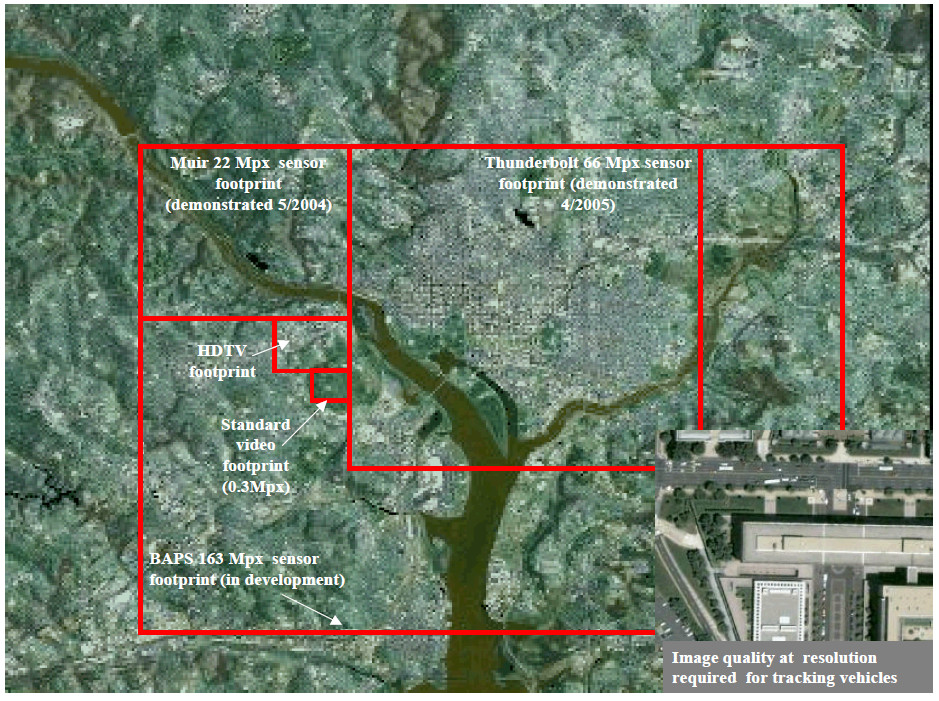

Most of these aircraft also have data-links that can pass video and other information they collect on to individuals operating down below or tertiary sites on the ground in near-real-time. Those same links can often be used to relay data and communications over extended ranges, as well.
Helicopters assigned to active-duty units, such as the UH-60 Black Hawks and UH-72 Lakotas assigned to the Army’s 12th Aviation Battalion at Davison Army Airfield at Fort Belvoir in Virginia or the UH-1N Twin Hueys of the Air Force’s 1st Helicopter Squadron at Andrews Air Force Base in Maryland, could also contribute to the ISR ecosystem in support of the inauguration. Even helicopters without camera-laden sensor turrets could still perform visual surveillance flights, if necessary.
At the same time, the 12th Aviation Battalion and the 1st Helicopter Squadron, among other helicopter-equipped units situated around the NCR have important Continuity of Government missions. As such, they will also be standing by to help rush President-elect Biden, Vice President-elect Kamala Harris, and other important U.S. officials to safety in the event a major crisis or contingency develops before, during, or after the inauguration. You can read more about the U.S. government’s Continuity of Government planning in this past War Zone piece.

It’s important to note there’s generally significant demand for dedicated ISR aircraft, which are also often in relatively short supply, too. This often limits the availability of active-duty assets for domestic operations, even without getting into the legal hurdles.
However, the National Guard, which occupies a very different legal space when not operating under the direct control of the federal government, is postured to provide more routine ISR support to domestic activities. For instance, Air National Guard RC-26B Condors, which you can read more about in this past War Zone piece, often work with domestic law enforcement agencies, particularly in regards to counter-narcotics operations.
There are multiple RC-26B subvariants and the ones that carry electro-optical and infrared video camera-equipped sensor turrets are most commonly deployed domestically, though other examples are fitted with SIGINT packages. Some of these aircraft have also carried radars with synthetic aperture imaging functionality, capable of taking still images, day or night, and in almost any weather, in the past, as well.
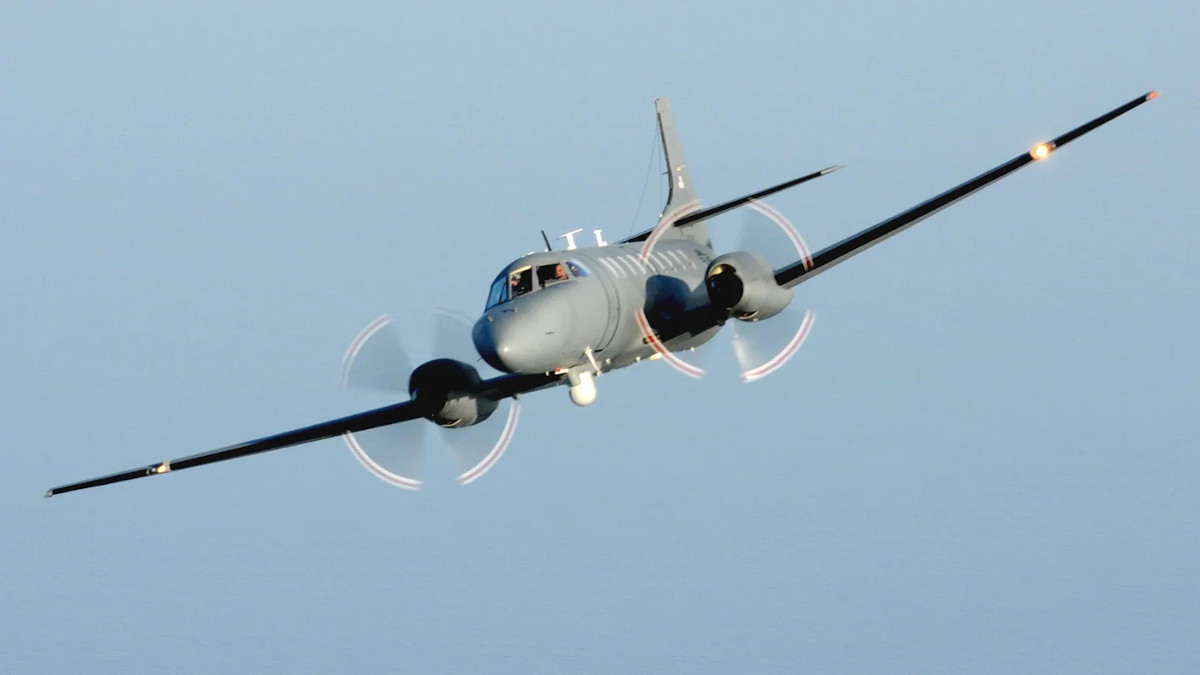
The camera-equipped versions were notably employed over Washington, D.C. in 2020 in response to protests sparked by the police killing of George Floyd in Minneapolis, Minnesota. RC-26B flights were also carried out in Arizona, California, and Minnesota to monitor similar protests.
The use of these aircraft in those instances was controversial. A subsequent investigation by the Office of the Inspector General of the Air Force determined that, while the aircraft did not gather personal information on any individuals, a possibility that had prompted concerns among members of Congress and civil liberties groups, the National Guard Bureau had improperly approved the flights, to begin with.
There are MC-12W Liberty aircraft, similar in many respects to the Army’s RC-12 and MC-12 fleets, within the Air National Guard, as well. As with their active-duty counterparts, helicopters, especially from Army National Guard units, could also conduct surveillance flights.
There may be some reticence to make any prominent use of National Guard helicopters in support of the inauguration given the backlash to the extremely controversial and potentially dangerous employment of D.C. Army National Guard UH-60s and UH-72s to try to disperse groups protesting in the District after George Floyd’s death last year. You can read more about that incident, and the subsequent investigation, in these past War Zone stories.
It’s also worth noting that U.S. Air Force fighter jets, including the D.C. Air National Guard’s F-16C/D Vipers that stand alert every day to protect the nation’s capital, carry targeting pods equipped with electro-optical and infrared video cameras. In the Homeland Defense role, these are primarily used to help identify aircraft and other potential aerial threats at extended ranges. However, they also provide a secondary ISR capability. As such, F-16C/Ds, as well as F-15C/Ds Eagles called up from other units that might also be called upon to fly combat air patrols during the inauguration, could be called upon to fly so-called “non-traditional” ISR missions, or NTISR, in support of contingency on the ground.
Air National Guard F-16C/Ds are also increasingly being equipped with AN/APG-83 Scalable Agile Beam Radar (SABR), an active electronically-scanned array type you can read more about in this past War Zone piece. The DC National Guard Vipers were the first to get rushed this capability due to their high-stakes air sovereignty mission. SABR offers synthetic aperture imaging and ground moving target indicator functionality in addition to improved capabilities when searching for and tracking aerial targets, especially low flying cruise missiles and drones, which are becoming an increasingly dire concern.
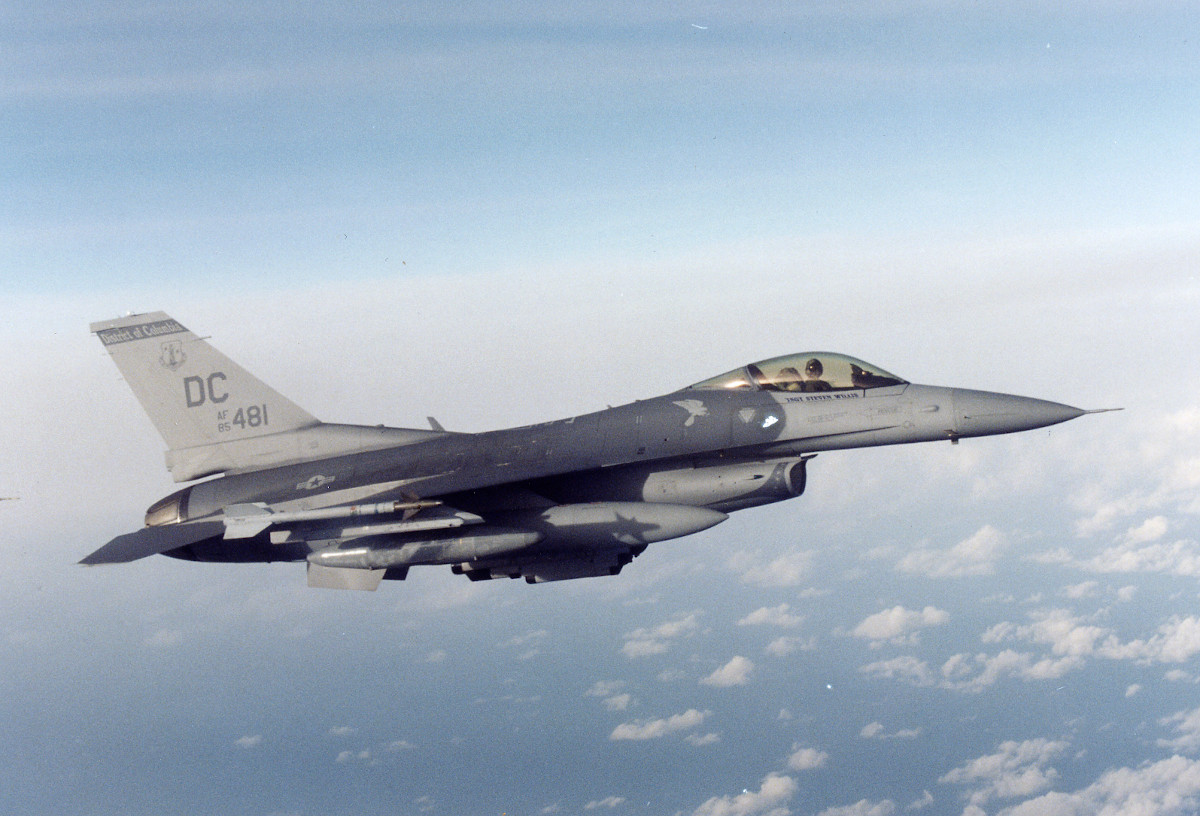
The entire integrated air defense network around the NCR will be on high alert for any kind of contingency during the inauguration. In addition to fighter jets, E-3 Sentry Airborne Warning and Control System (AWACS) aircraft customarily watch the skies, while National Advanced Surface-to-Air Missile Systems (NASAMS) and Avenger point-defense systems will sit ready on the ground, all backed up by a large sensor network distributed throughout the NCR. You can read more about the air defenses that ring the NCR in these past War Zone pieces.
The U.S. Coast Guard, which occupies a unique position as the only uniformed U.S. military service outside of the Department of Defense, is part of this equation, too. It has MH-65 helicopters based at Reagan International Airport, which are also part of the air defense posture in the NCR, being regularly used to intercept and identify lower-and-slower-flying potential threats. These could also be used to conduct air-to-ground surveillance flights, both through visual means and using the camera-equipped turrets under their noses.
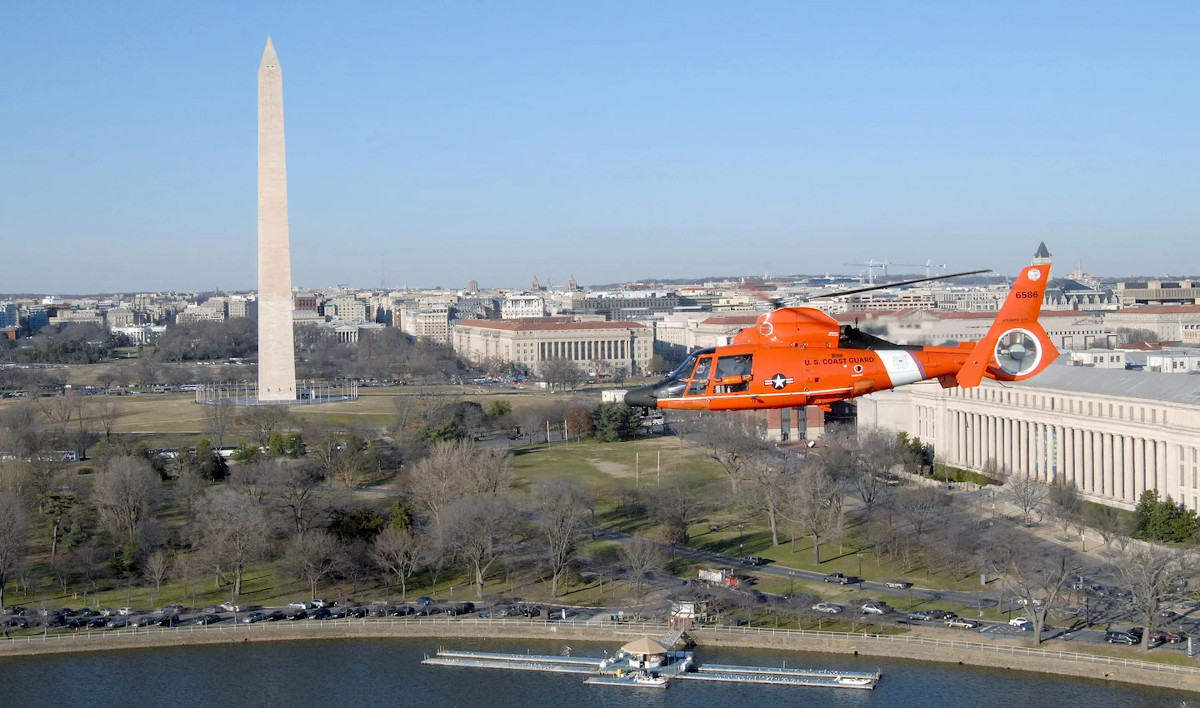
A multitude of federal, state, and local law enforcement agencies will also be supporting the inauguration. Many of them have aircraft, including both fixed-wing types and helicopters, that could be used for surveillance missions, as well as certain other kinds of intelligence-gathering, if required.
There are too many specific aircraft types and configurations to cover each one individually, but what we saw in response to the protests emanating from George Floyd’s killing and other incidents last year offers insight into what we might expect to see during the inauguration. Just over Washington, D.C., there were flights by Dash-8 turboprops belonging to U.S. Customs and Border Protection (CBP), as well as a Cessna Citation business jet and a Cessna Caravan turboprop, both linked to the Federal Bureau of Investigation (FBI).
The CBP Dash-8s, designed primarily for over-water surveillance, carry electro-optical and infrared video cameras in a sensor turret along with a surface search radar. CBP’s Beechcraft King Air-based Multi-role Enforcement Aircraft (MEA), which were also employed to monitor protests elsewhere across the country last year, offer these same general capabilities, but in a smaller and more modular package.


One of CBP’s Reaper drones was also sent to monitor protests in Minneapolis in relation to the death of George Floyd last year, but the agency subsequently said that it returned to base without collecting any video footage after it was “determined that the aircraft was no longer needed for operational awareness.” CBP’s Reapers are all unarmed, but have sensor turrets with full-motion video cameras under their noses. CBP also has versions that are equipped with surface search radars, primarily for overwater operations, while other specialized bolt-on radars are sensitive to track individuals’ movements.
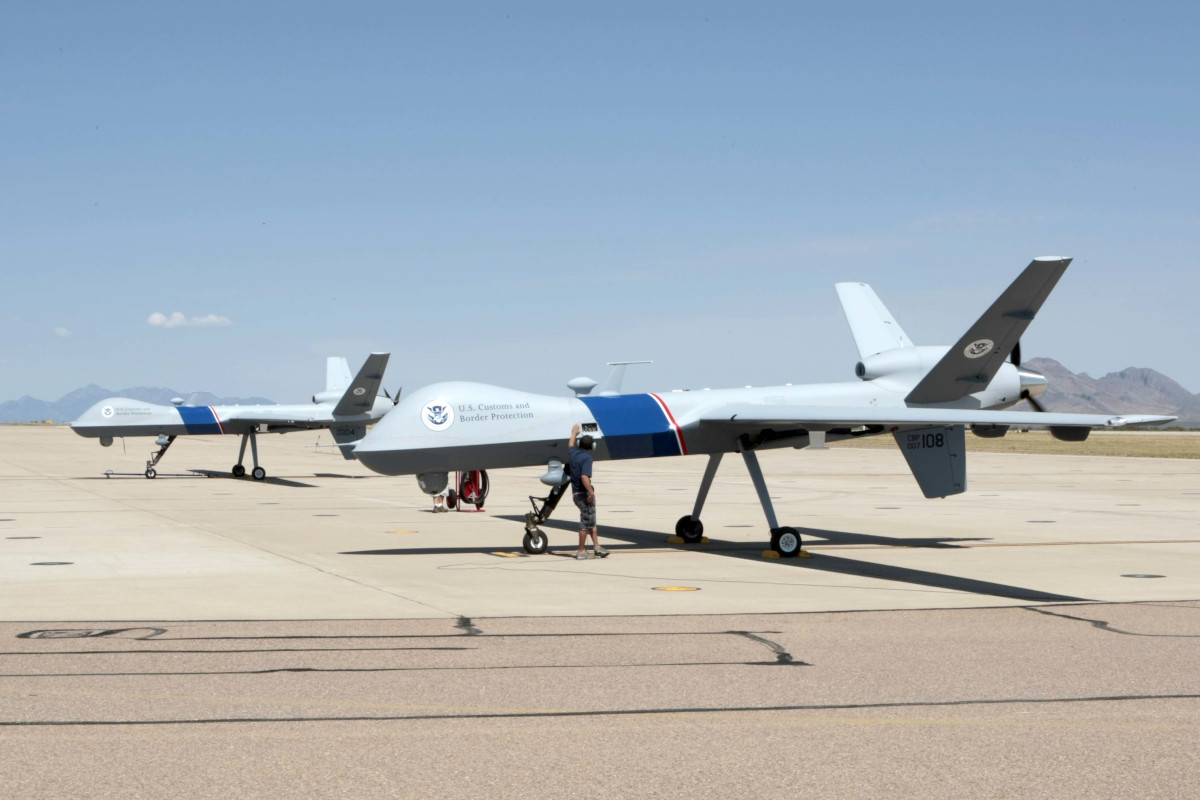
The exact configurations of the FBI-linked Citation and the Caravan seen last year over the nation’s capital are unknown. It is likely these aircraft also carry some combination of cameras and could also be equipped with systems design to intercept, geolocate, and track cell phone and other communications signals.

CBP and FBI, among other federal agencies, operate additional types of fixed-wing aircraft that may have other ISR capabilities, including wide-area surveillance sensors. These aircraft also generally have their own data-links that can send information to ‘customers’ on the ground in near-real-time.
Nearby state or local authorities might provide additional capacity in this regard, as well. Authorities in Baltimore, Maryland, just to the northeast of D.C., have notably been experimenting with aircraft equipped with wide-area surveillance systems in recent years, something that has drawn criticism from civil liberties groups concerned that these flights could gather mountains of information about individuals who are not suspected of having committed a crime.

It’s worth noting that many of these fixed-wing aircraft supporting law enforcement agencies are operated, and sometimes even owned entirely, by contractors or can be registered through front companies to obscure their ownership and origin.
Beyond fixed-wing types, law enforcement agencies also operate a wide variety of helicopters, many of which carry their own video camera-filled turrets. Not surprisingly, just in the past week or so, there has been an uptick in sightings of CBP AS350s with exactly these kinds of sensor systems. The helicopters CBP has deployed notably include examples painted in more discreet civilian-type liveries in addition to ones wearing its official blue-and-white paint scheme.
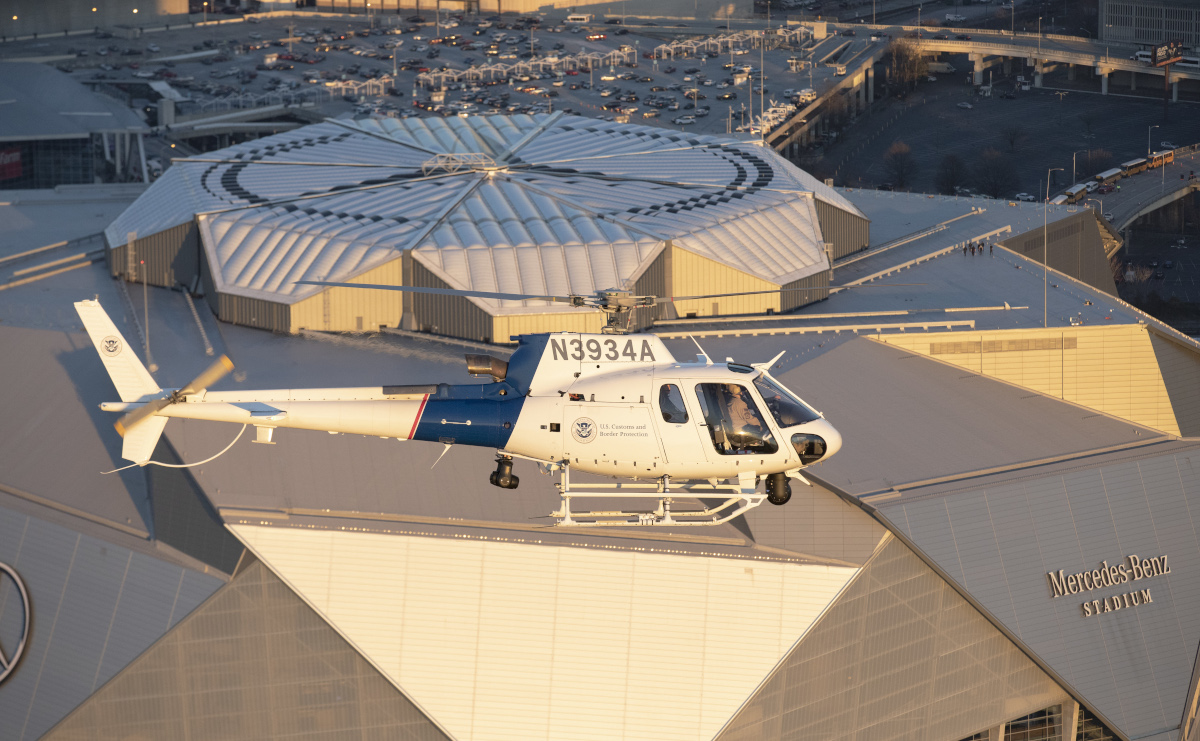
The U.S. Park Police’s helicopters are frequently seen flying over the District of Columbia on any given day and will certainly be airborne during the inauguration. State and local police departments, including D.C.’s own Metropolitan Police Department (MPD) and those in neighboring Maryland and Virginia, also have helicopters that are likely to be seen zipping about, too. All of these aircraft are equipped with their own sensors, usually including a FLIR system. A recent report from the Government Accountability Office (GAO), a Congressional watchdog, on aviation noise concerns in and around the District of Columbia provides more detailed information about the kinds of law enforcement helicopters that routinely operate in the area.


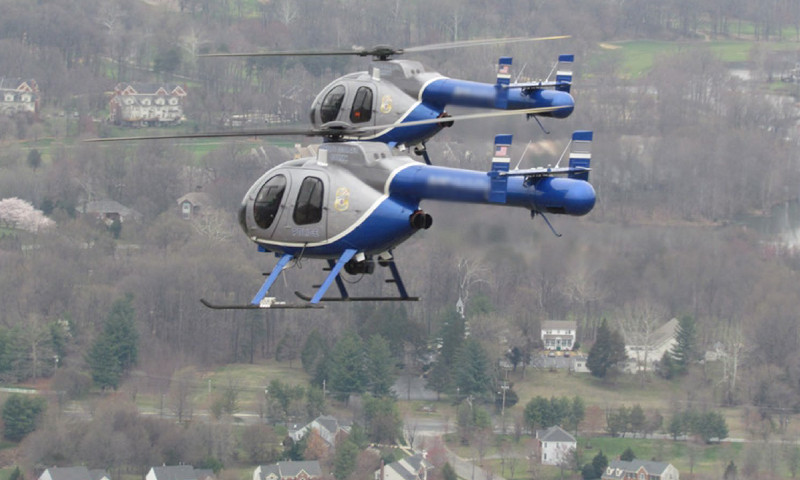
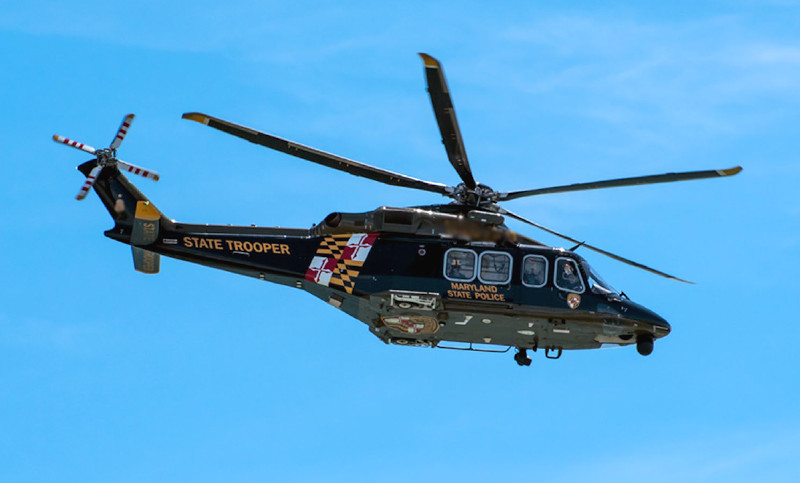
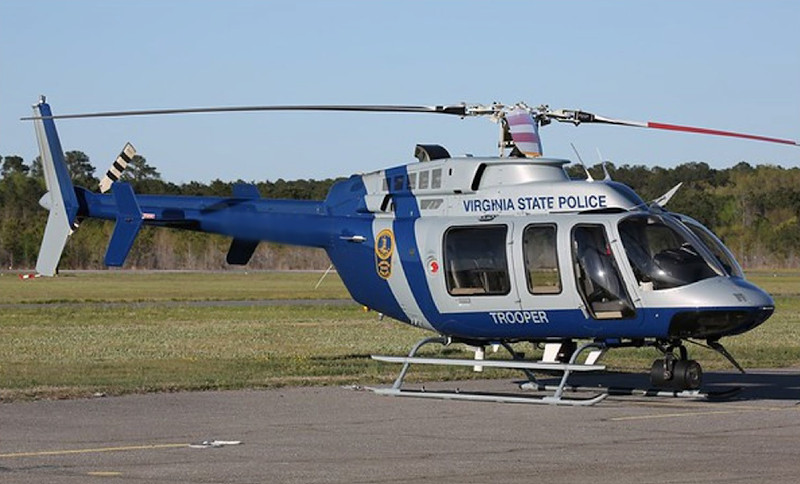
The Department of Energy’s National Nuclear Security Administration (NNSA) has also been involved in security preparations ahead of the inauguration, including aerial radiation surveys using one of its specially-configured Bell 412 helicopters between October and November of last year. These helicopters, some of which are based at nearby Andrews Air Force Base, are part of NNSA’s Aerial Measuring System (AMS).

NNSA conducts these surveys ahead of NSSEs to help establish a baseline radiation map of the surrounding area. This allows personnel to quickly identify potential concerning hot spots, which could signal the presence of nuclear or radiological weapons, the latter of which are more commonly known as “dirty bombs,” during subsequent flights close to and during the event in question. Fixed-wing aircraft also support this mission. You can read more about AMS, its capabilities, and how it is employed in this past War Zone piece.
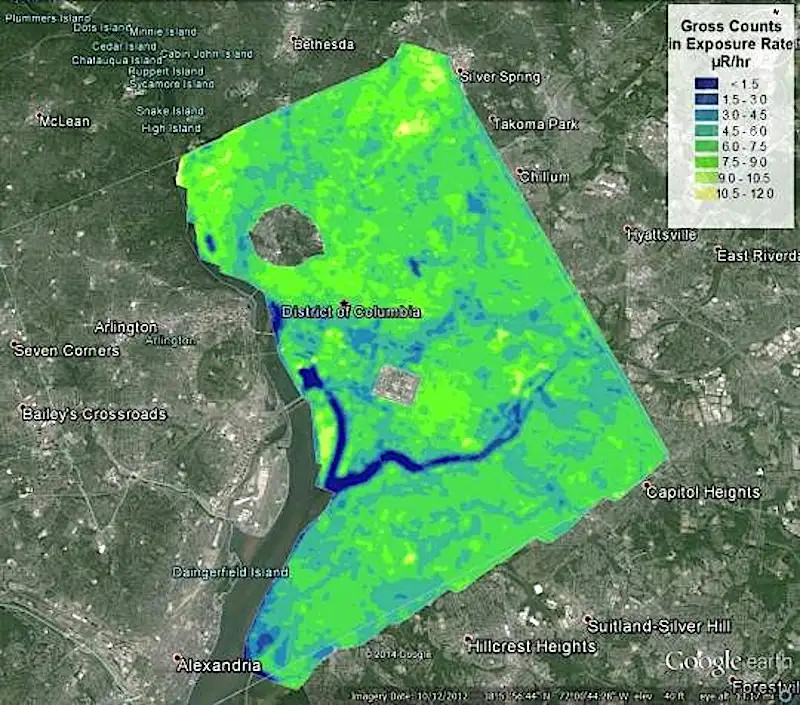
While aircraft trackers have done amazing work tracking these planes and helicopters and garnering a better understanding of their capabilities over the years, recently, some of these aircraft have ‘gone dark’ and are not trackable on common flight tracking websites. This appears to a be new measure that domestic law enforcement agencies are taking for high-priority missions. As such, during major events, oftentimes aircraft are orbiting overhead in plain sight that cannot be seen on flight trackers while others nearby can. This was the case in multiple locations in the aftermath of the killing of George Floyd.
While the inauguration of Joe Biden as the 46th President of the United States is historic for a number of reasons, one of them will be just how many assets have been activated to surveil the security situation leading up to, during, and after the ceremony. Following the explosion of aerial surveillance assets being used domestically across the country that we saw this summer in the aftermath of George Floyd’s death, the inauguration of Joe Biden is very likely to continue with that trend to an even more extreme degree. Of course, some of this depends on the weather and the exact disposition of the security situation at the time.
While these may be special circumstances, the use of these types of aircraft and their sleuthing payloads is only set to increase in frequency and magnitude in the years to come.
Contact the authors: Tyler@thedrive.com and joe@thedrive.com
